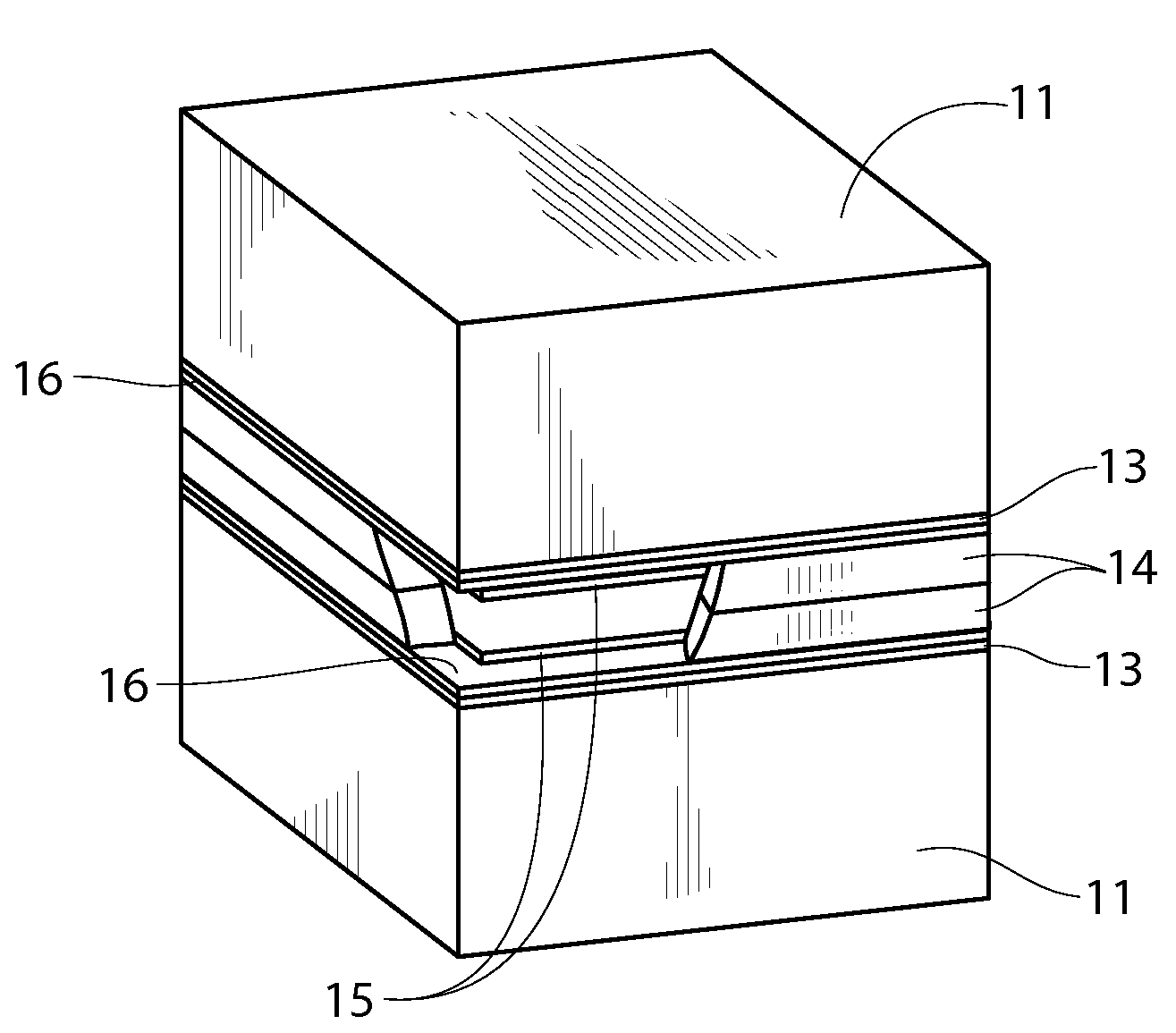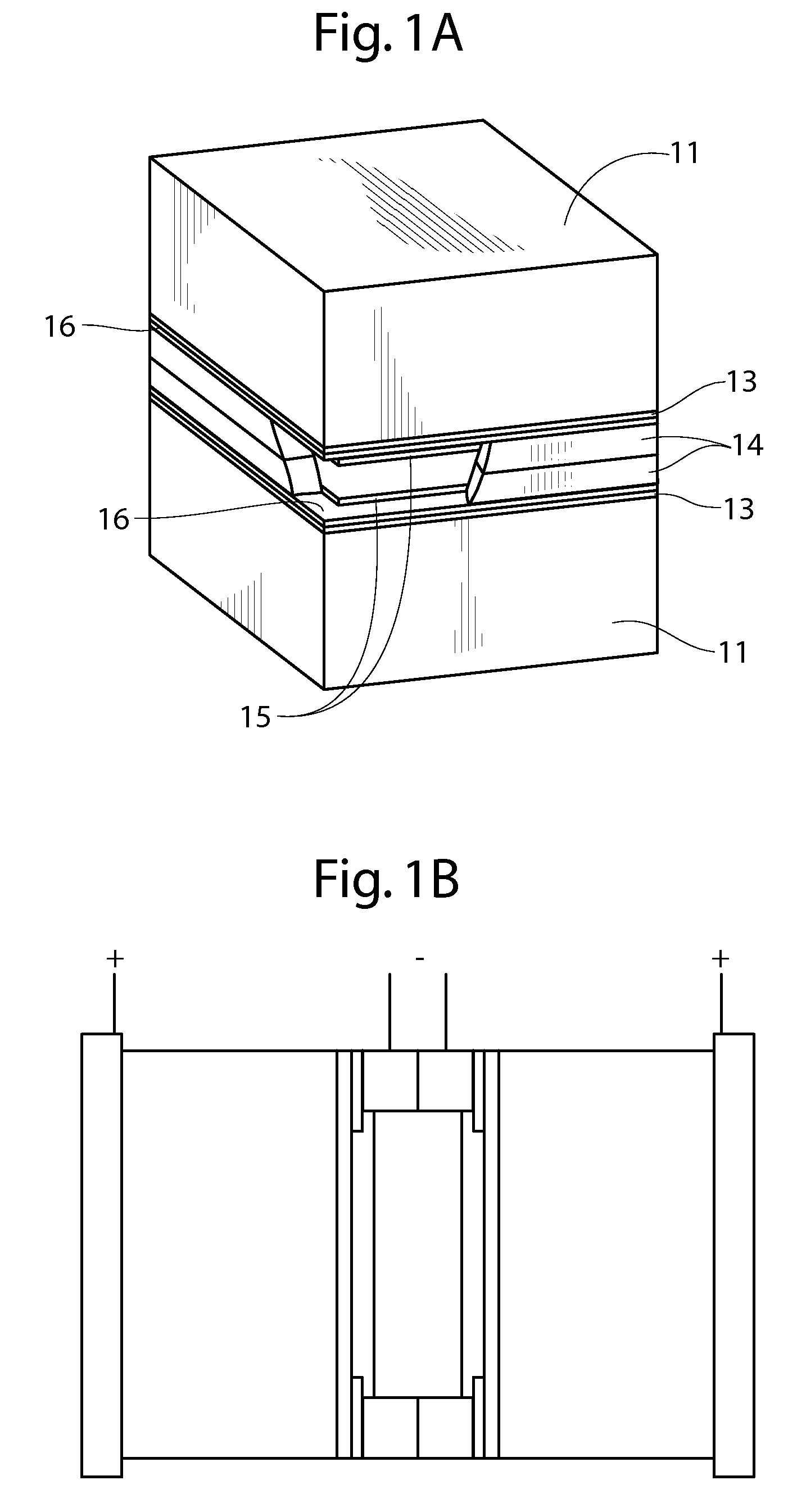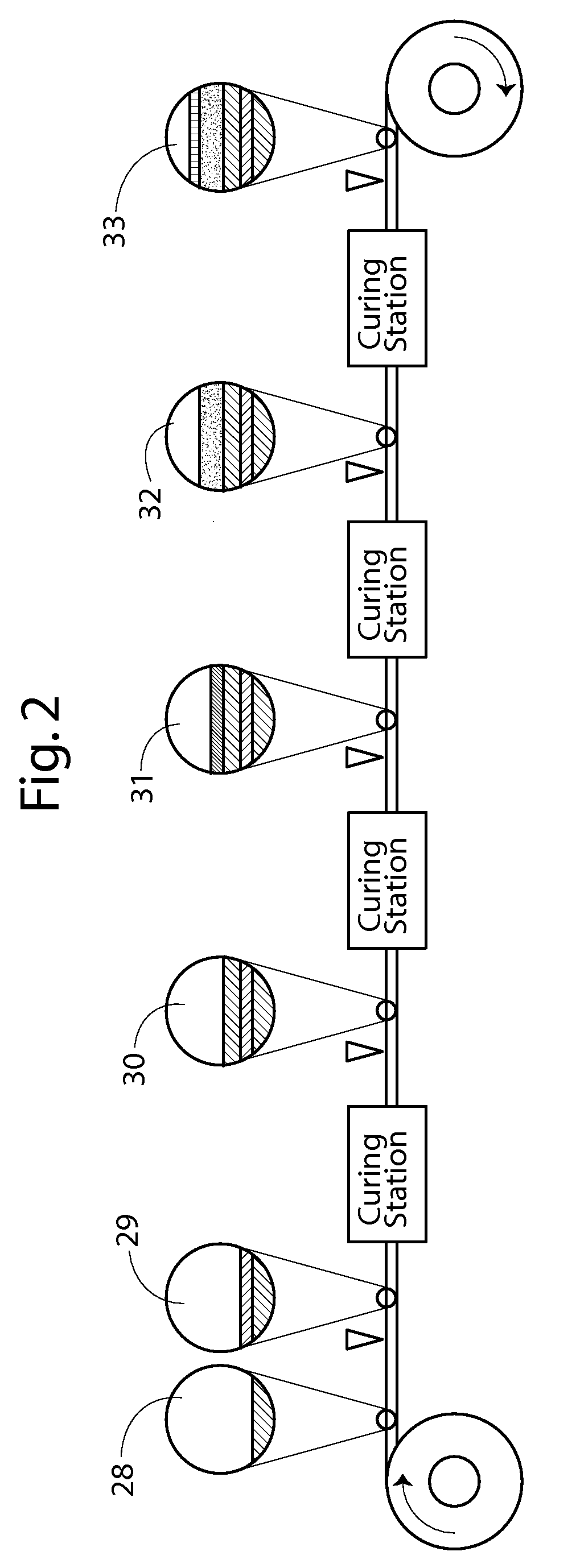Low Cost Solid State Rechargeable Battery and Method of Manufacturing Same
a rechargeable battery, low cost technology, applied in the direction of non-aqueous electrolyte cells, cell components, electrochemical generators, etc., can solve the problems of limiting the discharge rate of batteries, requiring external metal packaging, and battery not rechargeable,
- Summary
- Abstract
- Description
- Claims
- Application Information
AI Technical Summary
Problems solved by technology
Method used
Image
Examples
Embodiment Construction
[0015]With reference next to the drawings, there is shown a battery 10 in a preferred form of the invention. The battery 10 includes a polymer electrolyte composite cathode 11, an amorphous electrolyte 13, a protective battier material 14, a protected lithium metal anode 15, and an insulation material 16. The battery 10 disclosed herein consists of a composite cathode 11 composing powders of an active cathode material such as the lithium intercalation compounds lithium nickel oxide, lithium titanate, lithium cobalt oxide, lithium manganese oxide, or a mixed compound of these active components such as lithium nickel cobalt manganese oxide (LiNixCoyMnzO2) or other electrochemically active battery cathode material (preferably a material that undergoes no, or minimal expansion or contraction during charge and discharge cycling), a solid state lithium based electrolyte 13 of lithium lanthanum titanate (LixLayTiO3, lithium lanthanum zirconate (LixLayZrO3), or organic (lithium phthalocyani...
PUM
| Property | Measurement | Unit |
|---|---|---|
| volumetric energy density | aaaaa | aaaaa |
| energy densities | aaaaa | aaaaa |
| total thickness | aaaaa | aaaaa |
Abstract
Description
Claims
Application Information
 Login to View More
Login to View More - R&D
- Intellectual Property
- Life Sciences
- Materials
- Tech Scout
- Unparalleled Data Quality
- Higher Quality Content
- 60% Fewer Hallucinations
Browse by: Latest US Patents, China's latest patents, Technical Efficacy Thesaurus, Application Domain, Technology Topic, Popular Technical Reports.
© 2025 PatSnap. All rights reserved.Legal|Privacy policy|Modern Slavery Act Transparency Statement|Sitemap|About US| Contact US: help@patsnap.com



